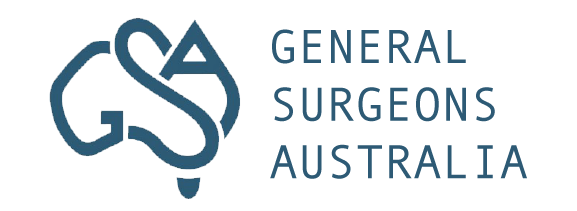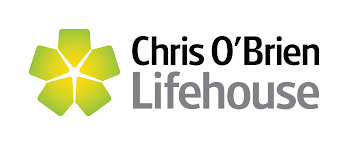Breast Imaging
What is Breast Imaging?
Breast imaging encompasses various techniques used to visualise the internal structures of the breast, primarily aimed at detecting, diagnosing, and managing breast diseases, most notably breast cancer.
Who is Suitable for Breast Imaging?
The suitability for breast imaging varies based on individual risk factors, age, and specific symptoms:
- Average-Risk Women: For women at average risk of breast cancer, annual screening mammograms are recommended starting at age 40. Guidelines may vary slightly between countries and organisations, but this is a common recommendation.
- High-Risk Women: Women with a higher risk of breast cancer, such as those with a family history of the disease, known genetic mutations like BRCA1 or BRCA2, or a history of radiation therapy to the chest, may need to begin screening earlier. They may also benefit from supplemental screening modalities like MRI and mammography.
- Women with Breast Symptoms: Individuals experiencing symptoms such as a lump, pain, nipple discharge, or changes in the breast's appearance should undergo diagnostic breast imaging to determine the cause.
- Men at Risk of Breast Cancer: Although rare, men can also develop breast cancer. Those with a strong family history or genetic predisposition may also require targeted breast imaging.
Benefits of Breast Imaging
- Early Detection of Breast Cancer: Mammography, the most common form of breast imaging, can detect breast cancer several years before physical symptoms develop. Early detection significantly increases the chances of successful treatment and survival.
- Accurate Diagnosis: Breast imaging provides detailed images of the breast tissue, helping healthcare providers distinguish between benign and malignant conditions and plan appropriate interventions or treatments.
- Monitoring of Breast Changes: For women with diagnosed breast conditions, imaging is crucial in monitoring the progress of treatment and any changes in the breast tissue over time.
- Guidance for Biopsy: Imaging techniques like ultrasound and MRI can guide biopsy procedures to ensure that tissue samples are accurately taken from the right areas.
Types of Breast Imaging
- Mammography: The most common and well-known type of breast imaging, mammography uses low-dose X-rays to create images of the breast. There are two main types:
- Screening mammography is used to detect breast cancer in women who have no symptoms.
- Diagnostic mammography investigates suspicious breast changes, such as a new lump, pain, or nipple discharge that the woman or her doctor has noticed.
- Breast Ultrasound: This imaging technique uses sound waves to produce pictures of the breast's internal structures. It is often used in conjunction with mammography to evaluate breast abnormalities and is particularly useful in distinguishing between solid tumours and fluid-filled cysts.
- Magnetic Resonance Imaging (MRI) of the Breast: Breast MRI uses magnetic fields and radio waves to create detailed images of the breast. It is highly sensitive and can detect abnormalities that other imaging tests might miss, making it useful for screening in high-risk populations.
- Digital Breast Tomosynthesis (DBT): Also known as 3D mammography, this relatively new technology captures multiple breast images from different angles, providing a clearer, more accurate view of the breast tissue.
- Breast Thermography: This method uses infrared technology to detect heat and blood flow in breast tissues. While it can help in monitoring the breasts, it is not a substitute for mammography.
Preparation Before a Breast Imaging
- Schedule Wisely: For a mammogram, it's often recommended to schedule the test for a time when your breasts are least likely to be tender, which is usually one week after your period.
- Avoid Certain Products: On the day of the mammogram, avoid using deodorants, antiperspirants, powders, lotions, or creams on your breasts or underarms, as these can appear as white spots on the imaging.
- Bring Previous Images: If you have had breast imaging done at another facility, bring these images and reports to help the radiologist compare past and current images for any changes.
- Wear Comfortable Clothing: You must undress from the waist up, so wear a two-piece outfit to make this easier.
Breast Imaging Procedure
- Mammography: You'll stand before an X-ray machine designed for breast X-rays. Each breast is compressed between two plates to flatten the tissue and produce clear images. The compression lasts only a few seconds, and the procedure usually takes about 20 minutes.
- Ultrasound: A gel is applied to the breast, and a handheld device called a transducer is moved over the area. The device emits sound waves that create images of the breast's interior.
- MRI: You'll lie face down on a table with cushioned openings for your breasts. The table slides into a large, tube-shaped machine. The MRI uses magnetic fields and radio waves to capture detailed images. The procedure usually takes 30 to 45 minutes.
What to Expect After a Breast Imaging?
- Results: The timing for results can vary, but you typically receive a report from the radiologist within a few days. The results will be sent to your doctor, who will discuss them.
- Physical Comfort: Some discomfort from compression during a mammogram is normal but temporary. No lasting pain should occur.
- Follow-Up: Additional imaging tests or a biopsy may be recommended if an abnormality is detected. If the imaging is normal, you'll be advised on the frequency of future screenings based on age and risk factors.
Breast Imaging Risks
While breast imaging is generally safe, there are several risks and considerations:
- Radiation Exposure: Techniques like mammography expose you to low levels of radiation. Although the risk of harm is small, it is not negligible, especially with repeated exposures. The benefit of detecting cancer early generally outweighs the radiation risk.
- False Positives/Negatives:
- False Positive: Sometimes, breast imaging suggests breast cancer when there is none. This can lead to additional tests, anxiety, and unnecessary biopsies.
- False Negative: Imaging tests may occasionally miss cancer. This can delay diagnosis and treatment, potentially affecting the prognosis.
- Overdiagnosis and Overtreatment: Screening, especially in populations at low risk, can identify cancers that may never cause symptoms or threaten a person’s life. This can lead to treatments for cancers that would not have caused any harm.
- Contrast Reactions: A contrast agent is usually injected into a vein for breast MRI. While generally safe, the contrast medium can cause allergic reactions.
Implications of Delaying Breast Imaging
Delaying imaging can allow undetected breast cancers to grow and potentially spread to other parts of the body, which can complicate treatment and worsen outcomes. For individuals experiencing breast symptoms or those at high risk, delaying imaging can lead to increased anxiety and uncertainty about their health status.
There is strong evidence that early detection of breast cancer through regular screening increases survival rates. Delays can lead to diagnoses at more advanced stages, which are harder to treat successfully.









